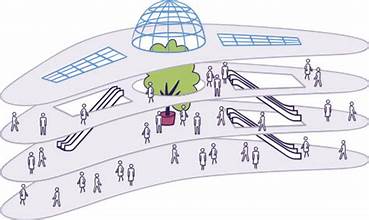Contrary to popular belief, American shopping malls are not disappearing; they are evolving. With e-commerce transforming retail, developers are repurposing malls into mixed-use destinations that integrate residential, commercial, and entertainment spaces to meet modern consumer needs.
The Rise of Mixed-Use Developments
The traditional mall, once anchored by department stores like Sears and Macy’s, is being replaced by a “live, work, play” model. This new approach blends retail, dining, offices, entertainment, and residential units, creating a dynamic community experience.
Currently, less than 30% of malls remain highly profitable, driving the need for reinvention. Modern malls are designed as integrated urban hubs, enhancing foot traffic and consumer engagement.
Key Features of Mixed-Use Malls
- Retail & Entertainment: Shopping centers now offer restaurants, social spaces, and entertainment hubs to attract visitors.
- Residential Units: Apartments and condos within malls provide convenient living for young professionals and retirees.
- Healthcare & Workspaces: Many malls incorporate medical centers, offices, and co-working spaces to diversify usage.
- Public Services: Some developments include banks, police stations, and government service centers.
Notable Redevelopment Projects
- Moorestown Mall (NJ): A former Sears store converted into a Cooper University Health Care facility, with 375 apartment units under development.
- Northgate Station (Seattle): A new medical pavilion and 234 residential units set to open by 2026.
- Avalon Alderwood Place (WA): A former Sears site transformed into luxury apartments, with rents from $1,860 to $3,885.
The Future of Shopping Malls
Modern malls are evolving into vibrant, multi-functional hubs that enhance economic growth and urban living. By integrating retail, entertainment, offices, and residences, these spaces are redefining the shopping experience for future generations.






